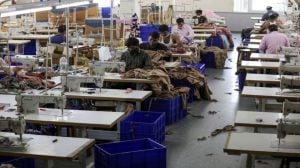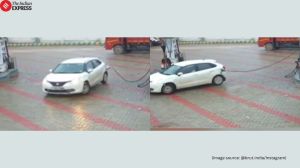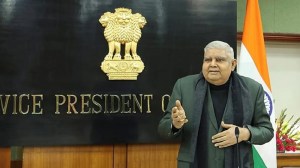Who are Delhi’s migrant workers? 70% from Bihar & UP, earn under Rs 20k a month, Lokniti CSDS study shows
A study conducted by the Centre for the Study of Developing Societies (CSDS) with a sample size of 1,017 people living in different parts of the city shows that most of them (45.5%) have been living in the city for more than 10 years, while 28.7% were born here.
 According to the 2011 Census, the proportion of inter-state migrants is highest in Delhi (Express File Photo)
According to the 2011 Census, the proportion of inter-state migrants is highest in Delhi (Express File Photo) In slum clusters and parts of unauthorised settlements in Delhi, eight out of ten people are from three states — Uttar Pradesh, Bihar and West Bengal. Most of them moved to the city for work and the family income of over 78% is less than Rs 20,000 a month.
A study conducted by the Centre for the Study of Developing Societies (CSDS) with a sample size of 1,017 people living in different parts of the city shows that most of them (45.5%) have been living in the city for more than 10 years, while 28.7% were born here.
That Delhi is a city of migrants has been well-established in census reports over the years. According to the 2011 Census, the proportion of inter-state migrants is the highest in Delhi.
The CSDS survey was conducted to gauge how domestic migrants in the city feel about the proposition of remote voting in the country. The survey shows that 27.8% of the people would trust “to a great extent” the secrecy of their ballot in remote voting, another 18.8% would trust it to “some extent”.

Most of the migrants in the city are young — 48.2% of them are under the age of 35. The population is overwhelmingly male — six in ten are men, and 81.9% are married.
“The study was conducted in slum clusters, jhuggis and unauthorised settlements — all lower homes. Respondents lived in small houses — no one had more than two rooms,” said Sanjay Kumar, co-director of CSDS’s Lokniti programme.
Over 60% of respondents did not have any education beyond middle school. Over a quarter were non-literate and only 8.5% were either in college (graduation) or had higher educational qualifications.

Most had access to LPG (83.7%), while a little over half had television sets (53%). While 84.2% of the people had either a bank or a post office account, only around 40% had ATM/debit cards/credit cards. Over 96% had Aadhaar cards.
Only about one in three people said that they had benefited from the Delhi government’s welfare schemes. Among them, almost 60% availed of the electricity subsidy, while 40% had access to free rations. Around 27% had benefited from the government’s free water scheme.

The proportion of people from the scheduled castes, scheduled tribes and other backward classes was the highest at 48%. Around 20% did not reveal their caste.
Kumar says this figure is hardly surprising. “There is a very strong degree of correlation between caste and class so the proportion in the areas that were targeted, such as slum clusters and jhuggis, will be similar,” he said.












